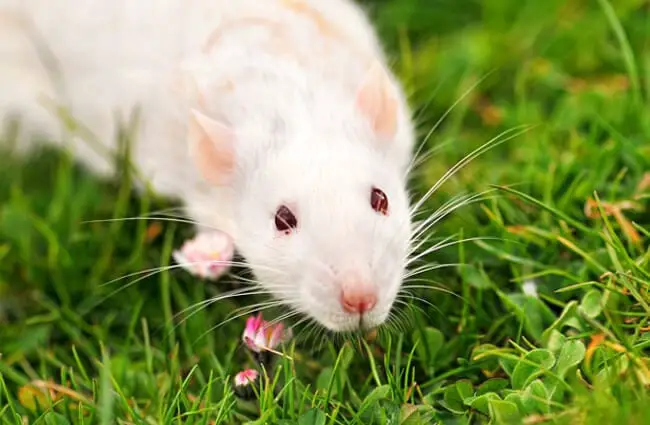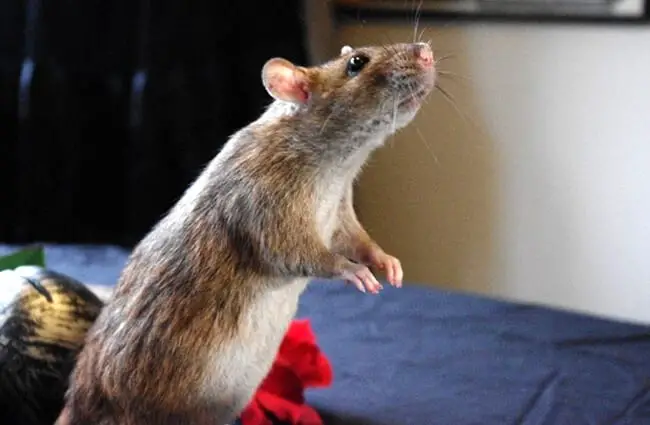The Remarkable World of Rats
Often misunderstood, rats are among the most adaptable and intelligent creatures on Earth. These resourceful rodents play a significant, yet often unseen, role in ecosystems worldwide and boast a surprisingly rich history intertwined with humanity. This guide delves into the fascinating life of rats, from their evolutionary origins and natural behaviors to their complex relationships with humans and the environment.

Rat Basics: Identification and Habitat
The term “rat” encompasses several species within the family Muridae, the largest family of mammals. The most familiar species is the brown rat (Rattus norvegicus), also known as the Norway rat, and the black rat (Rattus rattus), often called the roof rat. Brown rats are typically larger and more robust, with brown or gray fur, while black rats are sleeker, with black or dark brown fur and a longer tail.
Rats are incredibly adaptable and can be found on every continent except Antarctica. They thrive in a wide range of habitats, including forests, grasslands, swamps, and increasingly in human settlements. Brown rats prefer ground-level burrows and are often found near water sources, while black rats are more adept climbers and prefer higher elevations, such as attics and trees. Finding a rat in the wild often involves looking for evidence of their presence, such as droppings, gnaw marks, and runways along established trails.
Evolutionary History of Rats
The evolutionary story of rats begins millions of years ago with the emergence of early rodents. Their origins trace back to Asia, and they gradually dispersed across the globe. The modern brown rat, as we know it, is believed to have originated in Southeast Asia and spread to Europe with human trade routes during the Middle Ages. The black rat followed a similar path, initially spreading through ancient Roman trade networks.
Fossil evidence suggests that early rats were considerably smaller than their modern counterparts. Over time, they evolved to exploit new ecological niches and adapt to changing environmental conditions. This adaptability is a key factor in their widespread success and resilience.

Diet and Feeding Behavior
Rats are omnivores, meaning they eat both plants and animals. In the wild, their diet consists of seeds, fruits, nuts, roots, insects, and small vertebrates. They are opportunistic feeders and will consume whatever is readily available. Their strong teeth and powerful jaws allow them to gnaw through a variety of materials, including wood, plastic, and even metal.
Rats exhibit a fascinating behavior called “neophobia,” a fear of new things. This can make it challenging to trap or poison them, as they are wary of unfamiliar food sources. However, they are also highly intelligent and can learn to overcome this fear if a food source proves reliable. They have an acute sense of smell, which they use to locate food and assess its safety.
Reproduction and Life Cycle
Rats are prolific breeders. Female rats, known as does, can have multiple litters per year, with each litter containing up to a dozen pups. Gestation lasts around 21-23 days. Rat pups are born blind and hairless, and they rely entirely on their mother for care. They are weaned after about three weeks and reach sexual maturity at around three months.
Rats exhibit a complex social structure, with dominance hierarchies established within colonies. Males, known as bucks, compete for access to females. The lifespan of a wild rat is typically around one to two years, though they can live longer in captivity with proper care.

Ecological Role and Interactions
Rats play a vital role in many ecosystems. They are important seed dispersers, helping to propagate plants. They also serve as a food source for predators, such as owls, hawks, foxes, and snakes. Their burrowing activities can aerate soil and improve drainage.
However, rats can also have negative impacts on the environment. They can damage crops, compete with native species, and spread diseases. In some areas, they are considered invasive pests. Their interactions with other animals are complex and often depend on the specific ecological context.
Rats and Humans: A Complicated Relationship
The relationship between humans and rats is a long and complex one. Throughout history, rats have been both beneficial and detrimental to human societies. They have served as laboratory animals in medical research, contributing to advancements in our understanding of biology and disease. They have also been studied to understand pest control mechanisms.
However, rats are also associated with disease transmission, particularly bubonic plague, which decimated populations in Europe during the Middle Ages. They can contaminate food supplies and damage property. Despite these negative aspects, rats have also become popular pets, prized for their intelligence, playfulness, and affectionate nature.

Rat Behavior and Intelligence
Rats are remarkably intelligent creatures, capable of learning complex tasks and solving problems. They exhibit advanced cognitive abilities, including spatial reasoning, memory, and social learning. They can navigate mazes, recognize individual humans, and even cooperate with each other to achieve goals.
Rats also display a range of social behaviors, including grooming, playing, and empathy. They communicate with each other through a variety of vocalizations, body language, and scent marking. Their complex social structures and cognitive abilities make them fascinating subjects for scientific study.
Caring for Captive Rats
For zookeepers and pet owners, providing appropriate care for captive rats is essential. This includes a spacious enclosure with plenty of enrichment, such as toys, tunnels, and climbing structures. A balanced diet consisting of rodent pellets, fruits, and vegetables is crucial for maintaining their health. Regular veterinary checkups are also important for detecting and treating any potential health problems.
Rats are social animals and should be housed with companions whenever possible. Providing opportunities for social interaction and play is vital for their well-being. Avoid exposing rats to harsh chemicals or toxins, and ensure their environment is clean and hygienic.

Interesting Rat Facts
- Rats can swim for long periods, often several hours.
- They have excellent balance and can run along narrow beams.
- Rats are crepuscular, meaning they are most active during dawn and dusk.
- Their whiskers help them navigate in the dark.
- Rats are capable of feeling pain and experiencing emotions.
- They can learn to respond to their names.
- Rats groom themselves and others to maintain social bonds.
Encountering Rats in the Wild: Safety and Observation
If you encounter a rat in the wild, it is best to observe it from a safe distance. Avoid approaching or attempting to handle the animal. Rats can carry diseases, so it is important to avoid contact with their droppings or urine. If you suspect a rat is sick or injured, contact your local animal control agency.
Remember that rats play a vital role in the ecosystem, even if they are not always appreciated. Respect their space and avoid disturbing their habitat.
Rats, often underestimated, are truly remarkable creatures. Their adaptability, intelligence, and complex social behaviors make them a fascinating subject of study and a testament to the incredible diversity of life on Earth.

![Red Angus Closeup of a beautiful Red Angus cowPhoto by: U.S. Department of Agriculture [pubic domain]https://creativecommons.org/licenses/by/2.0/](https://animals.net/wp-content/uploads/2020/03/Red-Angus-4-238x178.jpg)




![Red Angus Closeup of a beautiful Red Angus cowPhoto by: U.S. Department of Agriculture [pubic domain]https://creativecommons.org/licenses/by/2.0/](https://animals.net/wp-content/uploads/2020/03/Red-Angus-4-100x75.jpg)

